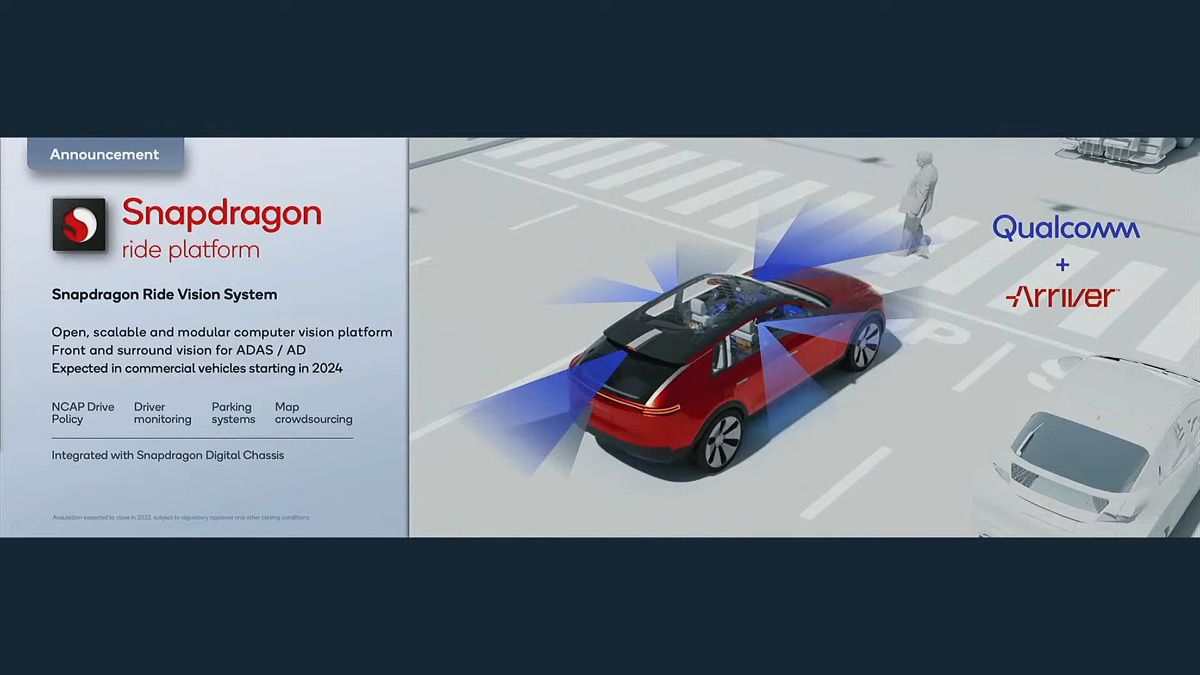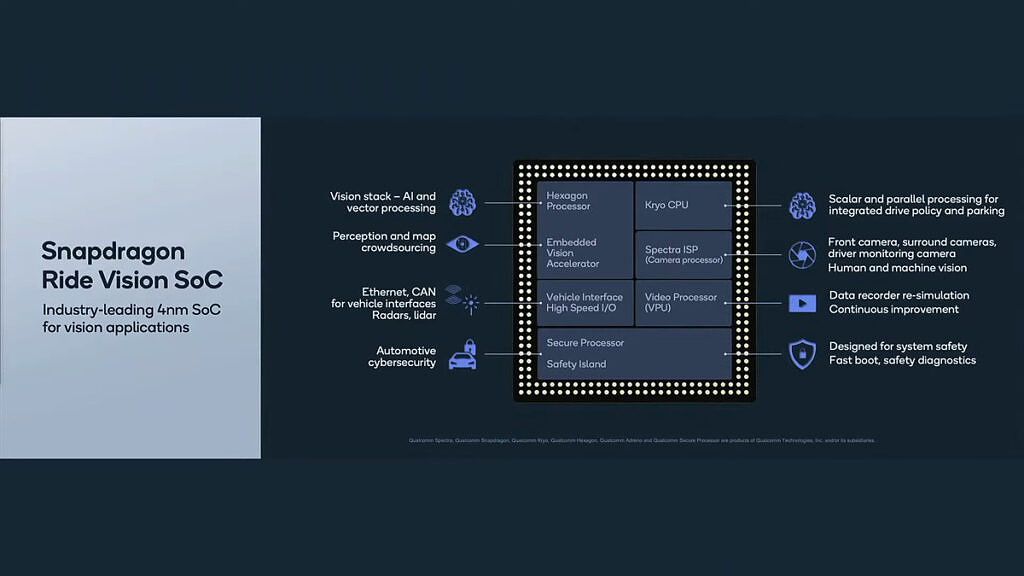Qualcomm's push into automotive wouldn't be complete without a chipset dedicated to self-driving cars. The company's Snapdragon Ride Vision System is an all-new software stack from Arriver paired with a 4nm SoC. It's designed for an optimized implementation of front and surround cameras for automated driving (AD) and advanced driver assistance systems (ADAS).
Qualcomm is confident that this system is "one of the industry's most scalable and open" systems when it comes to AD and ADAS. The company says that its flexible deployment options allow "for a common implementation of features and requirements, with functional safety/SOTIF support, across virtually all vehicle tiers and types". Qualcomm has been working on both AD and ADAS for a while now, with the company first announcing its entrance to the space at CES in 2020.
The Snapdragon Ride Vision System can detect static road geometry such as lane markers and guard rails, dynamic objects such as vehicles, and pedestrians and cyclists. It also has traffic sign recognition for global regulatory requirements. Custom neural network architectures for the chipset's enhanced perception is based on 8MP wide field of view cameras.
As Qualcomm puts it, it's an open and customizable system, so car manufacturers will be able to chop and change it to fit their own needs. Qualcomm also says that it supports Over-the-Air (OTA) updates for ongoing feature enhancements.
“As we further collaborate with the automakers and Tier 1 suppliers, our latest Snapdragon Ride Vision System aims to address a growing need for a more open, adaptable and scalable platform for computer vision solutions,” said Nakul Duggal, senior vice president and GM, automotive, Qualcomm Technologies, Inc. “Snapdragon Ride focuses on the extensive automated driving needs of our customers, ranging from scalable SoCs to integrated AD stacks and development platforms, and tools, that provide a comprehensive solution for L2-L3 automated driving, while maintain the flexibility to accommodate automakers and Tier-1 suppliers to bring their preferred solutions. The Snapdragon Ride Vision System can offer automakers the opportunity to customize more advanced driving experiences for every vehicle class.”
The Snapdragon Ride Vision System is expected to be available in vehicle production in 2024. Qualcomm has also announced that it is working with Renault Group on some connected car features with a "Digital Chassis" package of software and hardware developed by Qualcomm.


